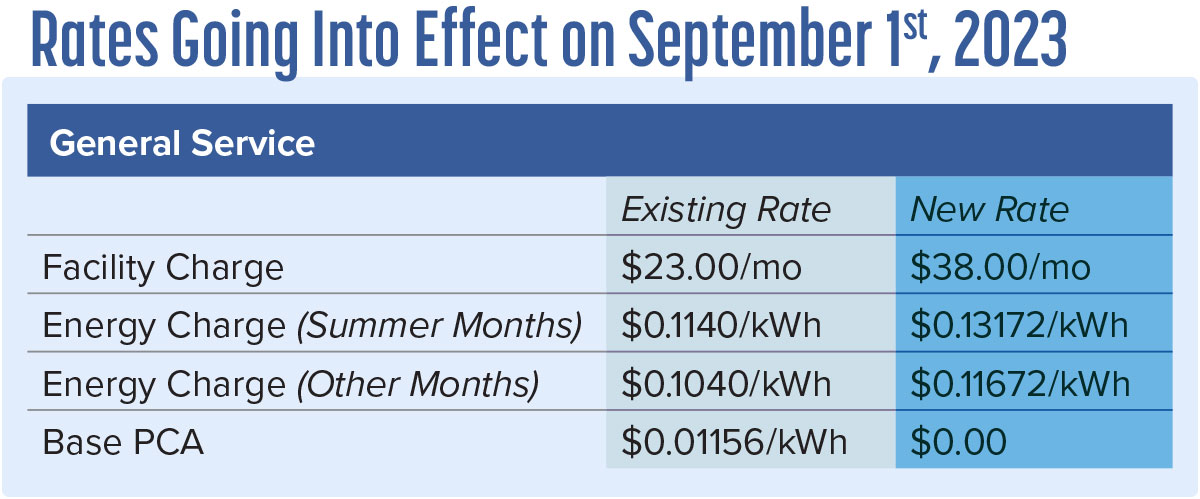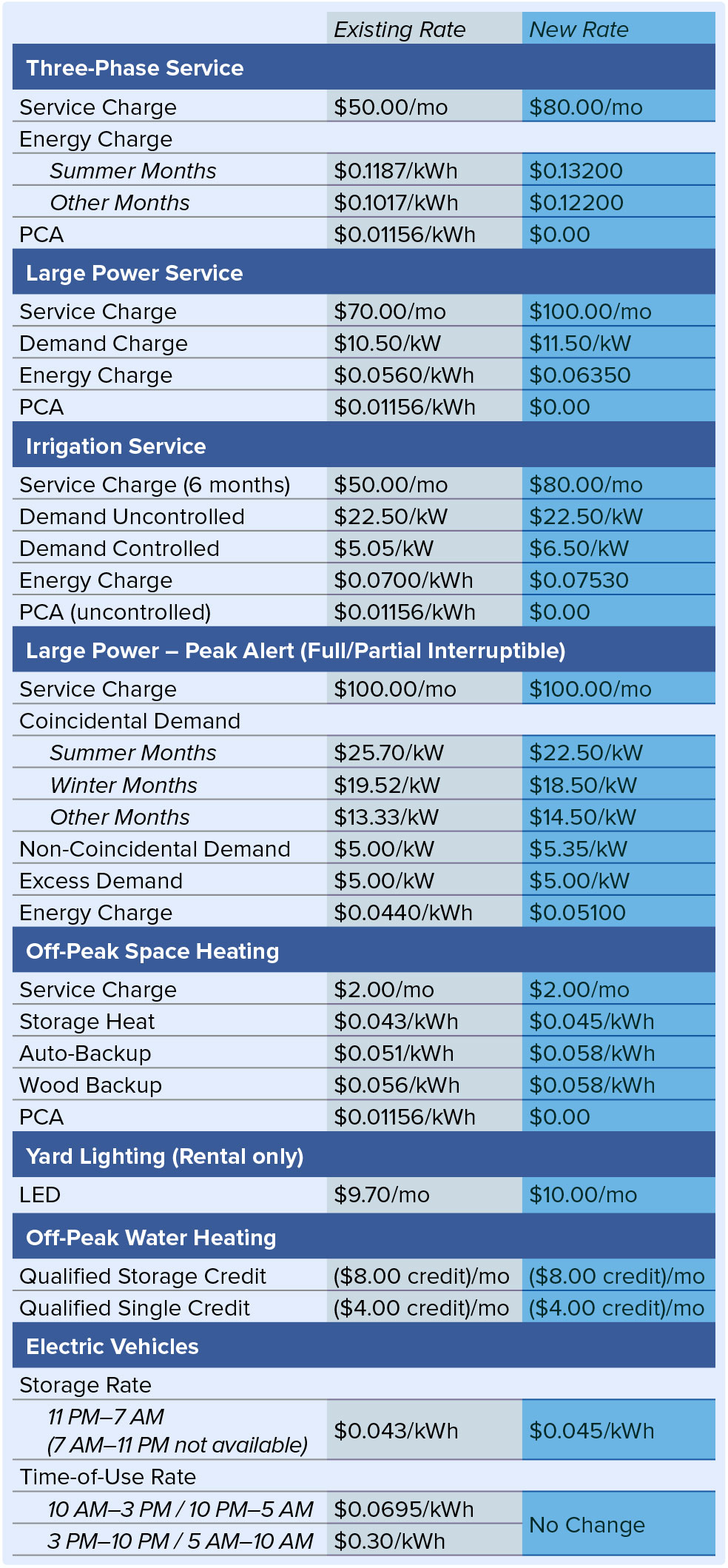Todd-Wadena Electric Cooperative’s (TWEC) Board of Directors recently approved a rate adjustment, effective for September 1st usage. The rate adjustment will be reflected on members’ October billing statements. There are several driving forces that contributed to the need for additional revenue. Over the past few years, the Cooperative has incurred increased costs related to wholesale power costs, long-term interest rates, depreciation, material costs, and other inflationary costs. The updated general service rate is listed below, along with a number of frequently asked questions, and all updated rates below that.

Frequently Asked Questions (FAQs)
TWEC has been able to keep member rates low with only two rate adjustments in the past 13 years. In 2011, there was a rate adjustment to general service, irrigation and off-peak heating. In 2015, three-phase, large power, irrigation and the commercial interruptible rates were adjusted. Recently, TWEC has experienced many driving forces that has led to the need for a rate adjustment including but not limited to: increased wholesale power costs, long-term interest rates, depreciation, material costs and other inflationary changes.
Your elected Board of Directors determine when an adjustment for rates is needed. Cooperatives are member owned. This places a unique responsibility on cooperative directors to be sensitive to the needs of members and balance all members’ interests. Therefore, director decisions are not based on profit or personal interests, but on what the needs of the members are, while keeping the cooperative financially sound. All money received from members goes back into the cooperative, paying for our purchased power and funding improvements and maintenance to our infrastructure. And remember, when we have excess margins, they become capital credits which are returned back to members. In the 2023 budget, the Board approved a cost of service study (COSS) to be completed in order to determine the cooperatives revenue requirements. After the completion and presentation of the COSS, the Board of Directors participated in a 2-day strategic planning session to look solely at the COSS results. While TWEC has been able to keep members’ rates low (and through effective cost-conscious decisions has not needed to implement any rate changes since 2015), the COSS highlighted the need for additional revenue.
A cost of service study determines the total costs incurred by the cooperative in providing service to its members and the allocation of those costs to member rate classes. It determines the cooperatives total cost of service i.e., and then utility’s total revenue requirement.
TWEC provides electric service to more than 7,400 members (9,000+ member services) over 2,286 miles of line with a service area of nearly 1,800 square miles. The facility charge is the members’ share of our fixed costs represented by wires, poles, transformers, repairs, meters etc., as well as support that is needed to provide power to our members. In general terms, revenue will go up 11%. Realigning costs is one of the goals with this decision. The adjustment will include changes to TWEC’s facility charge and kWh energy charge. Changes were made to both components to better align costs for distribution expenses such as poles, wires, and transformers to the facility charge versus the kWh energy charge. These distribution costs are incurred by the Cooperative whether or not energy is being used at a service location. This not only gives TWEC improved rate stability, it also allocates costs more fairly across all users – whether they have a seasonal property or a large family home.
The rate adjustment was approved by the Board of Directors on May 26th, 2023.
The new rates will be implemented September 1st, 2023, and will be seen on the October billing statement.
Since the adjusted rates are implemented for September electric usage, members may see a change to their daily usage they are used to budgeting for and may have to adjust how much and when the deposit funds into their prepay account
The PCA from Great River Energy is in place to pass along cost savings or increases, when the cost of fuel to generate electricity (coal, natural gas) and wholesale purchased power changes. This charge or credit from GRE varies each month. TWEC’s pass through PCA remains unchanged all year and the cooperative has absorbed much of the PCA costs from GRE for several years. Currently, many of TWEC’s rates have a PCA as a component. With the new rate adjustment, this PCA will go to zero.
TWEC has only 4 member per mile of line, where in a city there may be up to 40. All costs to maintain lines are divided to the number of members. Fewer members per mile of line means costs per member is higher. TWEC’s rates are very comparable to cooperatives with a similar members per mile.
The decision for Great River Energy (GRE) to sell Coal Creek Station ultimately came down to what was in the long-term best interest of GRE’s member-owner cooperatives such as Todd-Wadena Electric Cooperative. Coal Creek Station was accruing losses each year. Selling Coal Creek was a practical alternative to paying for losses which ultimately led to the decision to close Coal Creek. GRE is still purchasing coal powered energy from Coal Creek without having to pay the operating costs.
As a member, you do have that choice. However, there is still a cost to maintain the infrastructure to all accounts regardless if you are connected or not. When reconnecting an account within one year, you will be charged a $100 reconnection fee, plus the facility charge amount for each month disconnected to cover that cost (additional fees may apply). In short, the facility charge is insurance that your power will always be available when you need it (includes main and load management meters).
You can look into enrolling in one of our load management programs. TWEC has programs for heating (off peak and peak shave), water heating (ETS and peak shave), interruptible cooling, electric vehicles, irrigation and more. These rates are very competitive to alternative fuels and will save you money. TWEC also offers a variety of rebates, check out rebate page here: Rebates.
There is also legislation in place federally, and being formed in MN, that could help you save even more money. Visit www.rewiringamerica.com to review what might be available to you. There is also an Omnibus Bill in Minnesota that may support grant programs for pre-weatherization, residential electric panel upgrades, air source heat pumps, and energy storage systems.
TWEC offers the Improve-It loan as an option to help members make upgrade.
You can also sign up for SmartHub. SmartHub includes robust energy use analytics tools, which allows you to compare energy use over time and against weather data. Tracking your energy use like this lets you see if you’re using more energy than usual and empowers you to make adjustments if necessary.
Some ways you can use SmartHub for energy use monitoring:
- Analyze and understand usage trends to find ways to cut back.
- Create and track a monthly budget to avoid unexpected high utility bills.
- Set a point or range in time to compare differences in usage.
Other Rates

